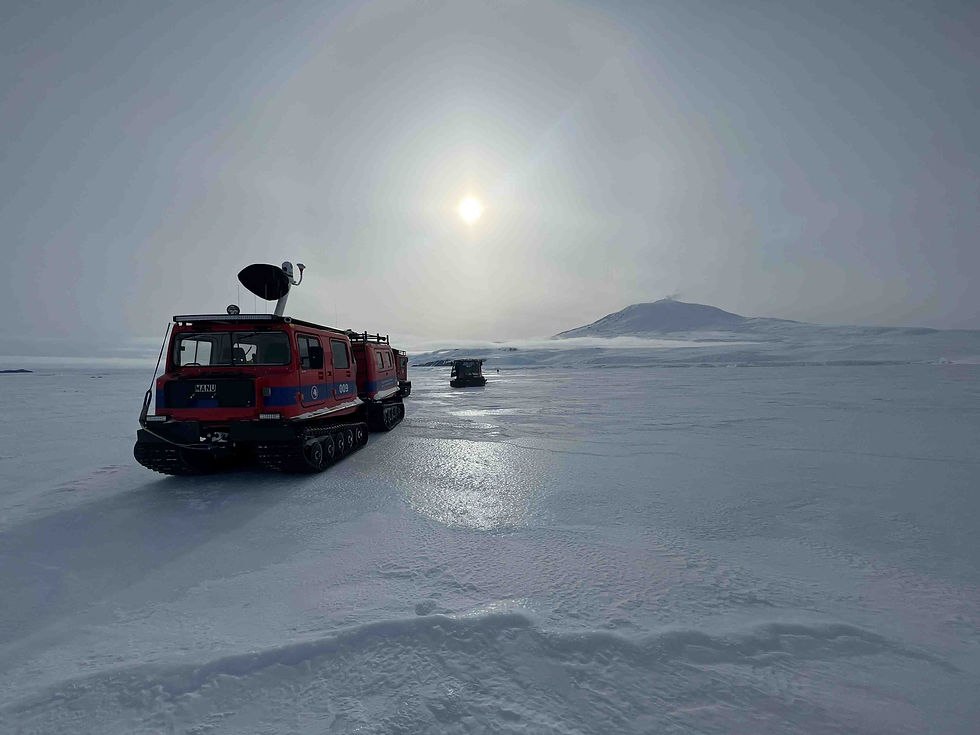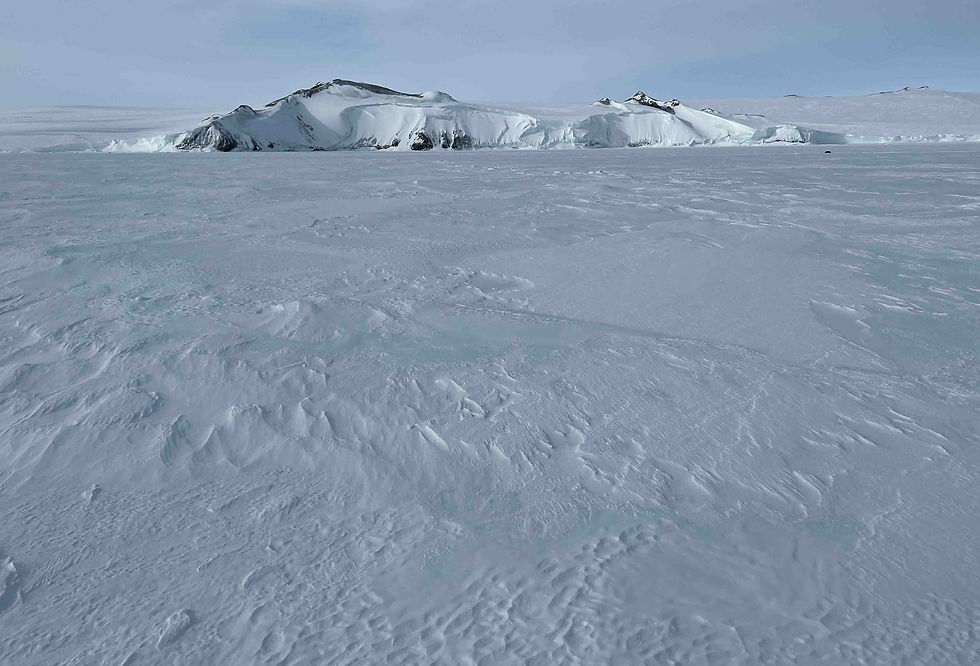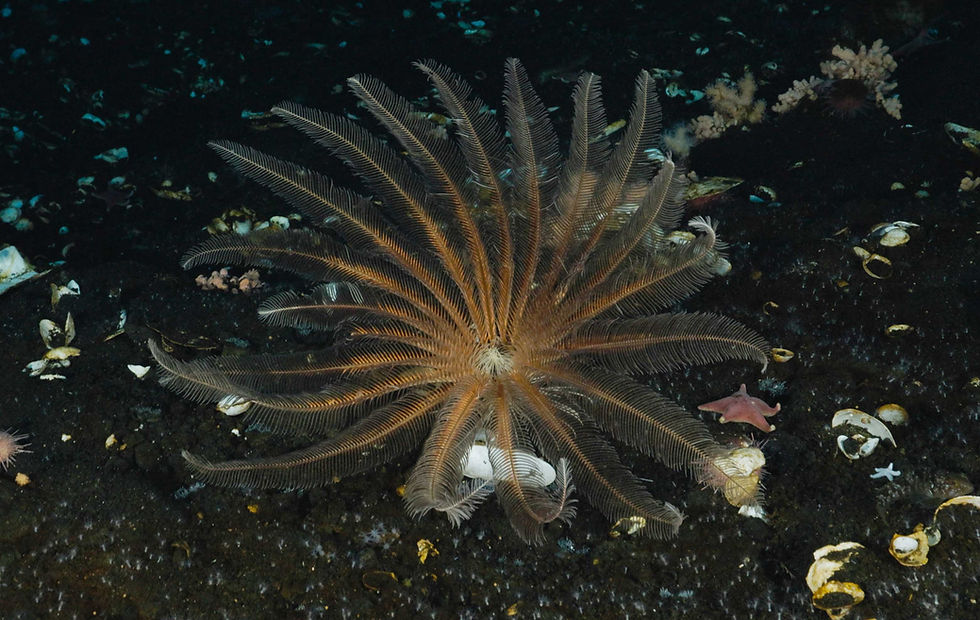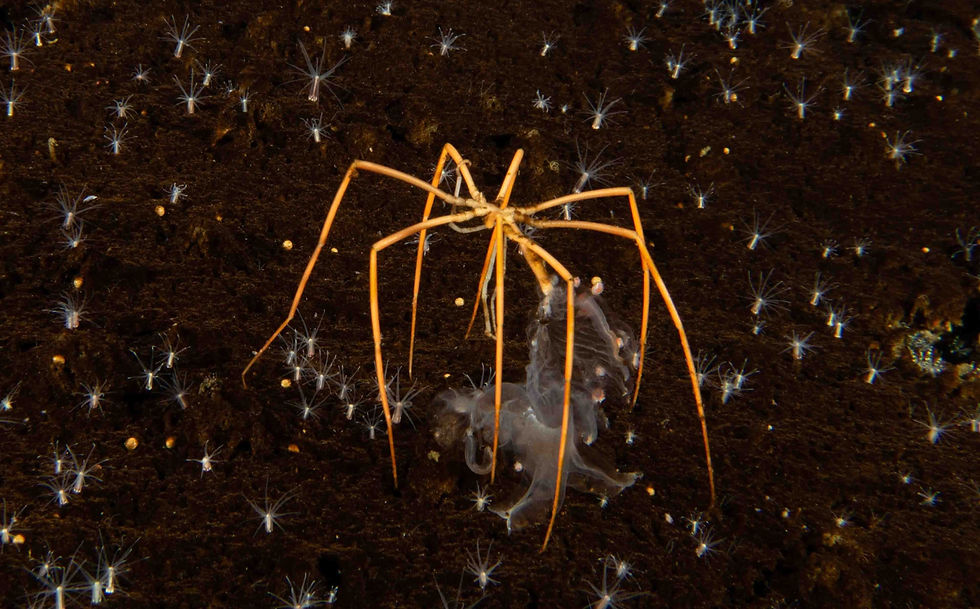A diver, carpenter, and drill operator walk into a bar...
- Rowan McLachlan
- Nov 6, 2023
- 2 min read
In order to SCUBA dive under the sea ice of Antarctica, one must first create an entrance into, and (more importantly) an exit from, the frozen Southern Ocean.

In a previous blog post from our 2022 expedition, I wrote about the process of drilling through the sea ice at the McMurdo Intake Jetty (click the link if you are interested!)
On October 20th, 2023, we drilled an ice hole at the Cinder Cones dive site, located ~45 minutes away from McMurdo towards the Erebus Volcano.

At 9 am the dive team met the drill operator, the carpenters, and the sea ice field safety team at the ice pier. The drill operator towed the Terex drill, dive hut, and drill bit out to the site using a bulldozer. The carpenters (who de-winterize the huts) drove a pisten bully and towed the fuel for the gas heater. The field safety team drove a Haglund and were responsible for navigating a safe route for us across the ice cracks. Finally, the divers joined the caravan in two pisten bullys.

Michael and Jacob in the pax cabin of a pisten bully

Haaglund on the sea ice, Mount Erebus in the background
As we made our way (slowly) toward the desired dive site, we had to stop often when we saw signs of cracks in the ice. Every crack must be profiled: drilled on either side using a Kovacs drill and the thickness of ice and the width of the gap measured with a weighted measuring tape. We then do a quick calculation to determine which, if any, of our vehicles can cross safely. Over the decades, a few vehicles have fallen through the sea ice near McMurdo, including the tractor "Big John"!

One of our pisten bullys making its way towards Cinder Cones

Our caravan left to right: Haglund, PB1, PB2, PB3 towing fuel

Mount Erebus and a pisten bully
It was a beautiful day and Erebus was clear from clouds. The plume of smoke and steam rising from the top constantly reminds us that this is an active volcano - the most southerly active volcano in the world! The summit has an elevation of 3,794 metres (12,448 ft).

The team profiling a crack to make sure it is safe to cross the bulldozer

Lines in the snow and ice indicate the location of hidden cracks that we must profile

The wind creates patterns in the snow on top of the sea ice

Jacob, Rowan, and Michael

Me and Erebus

The bulldozer drags the dive hut over the newly drilled ice hole

The carpenters level and light the heater inside the dive hut after it is set in place above the ice hole.
Here is a video outlining all the activities from the day, including our caravan across the sea ice, profiling cracks, navigating a safe path to Cinder Cones, attaching the drill bit to the Terex drill, drilling our hole, and dragging our dive hut into place so that we have a nice warm area to kit up for diving.



Having been and seen some of this from the side lines, its awesome to fill in the blank spots of that which we don't get to see! Many thanks